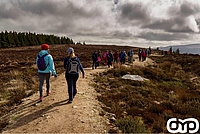Watchable Wildlife
Sika deer / Fia Seapánach / Cervus nippon
Did you know?
- Deer are ruminant herbivores like cows and sheep, with cloven hooves and complex stomachs for breaking down grasses and vegetation.
- Males have a set of antlers which are regrown every summer.
- Are not native to Ireland, coming originally from Japan (sika is Japanese for deer). They were introduced to Powerscourt Estate near Glencree in 1859.
- The female (hinds) live in small herds, whereas the males are more solitary.
- No predators in Ireland and have spread widely causing much damage to forests where populations are high.
- Sika deer have interbred with our native red deer and most are now hybrids in this area.
- Sika deer are protected under the Wildlife Act, but are subject to a hunting season and a licence is required.
What to watch for:
Size:
- Smallish species of deer, with males up to 80cm at the shoulder (females are slightly smaller)
Coloration:
- Summer coat is reddish with white spots, turning very dark grey-brown in the winter.
- There is a white rump patch which is displayed as a warning signal.
Where to watch:
- Live in deciduous and conifer forests which provide shelter and cover from predators (mainly human hunters). Widespread throughout conifer forests, feeding on open grassland.
When to watch:
- Early morning, and dusk.
Listen for:
- Short, barking alarm call to alert other members of the herd to danger.
- During the breeding season or rut, sika deer make a lot of noise! The sika stag has a special whistling call.
Viewing Locations:
- Ticknock
- Rathmichael
- Kiltipper Park
- Hell Fire Club
- Recreation
- Archaeology
Recreation Sites in the Dublin Mountains
- 5. Kilmashogue
- 6. Ticknock
- 7. Carrickgollogan
- 8. Barnaslingan
Archaeology Sites in the Dublin Mountains
- 1. Slievethoul
- 2. Lugg Woods
- 3. Seahan
- 4. Hell Fire Club
- 5. Massy's Wood
- 6. Tibradden
- 7. Kilmashogue
- 8. Ticknock
- 9. Ballyedmonduff
- 10. Rathmichael Wood







